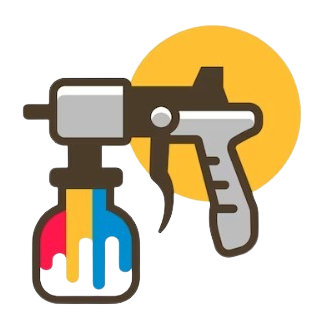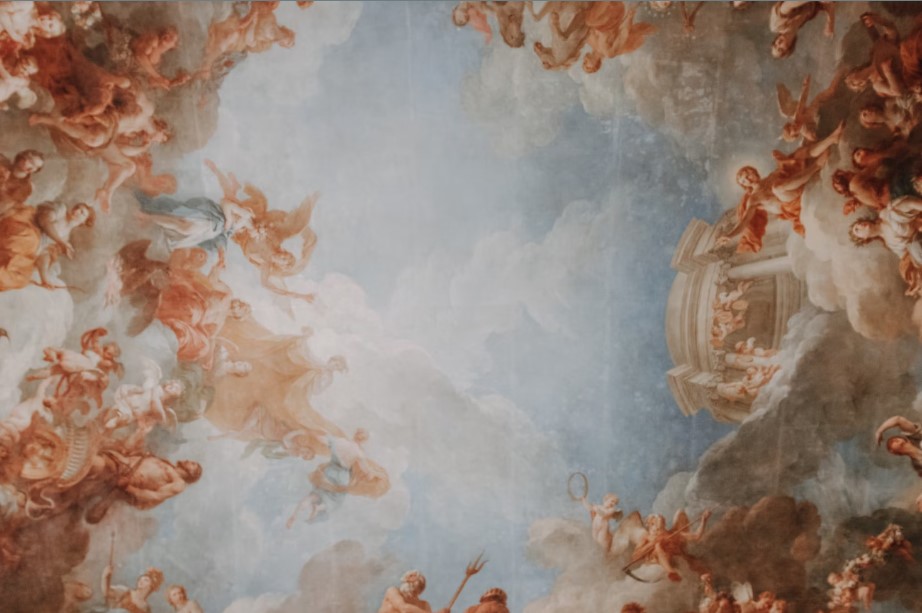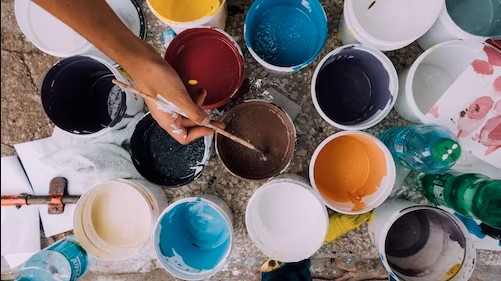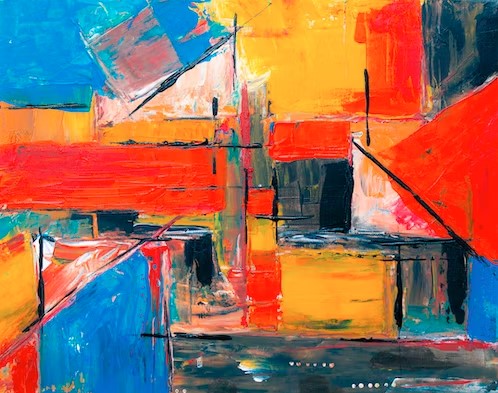ARTISTS MUST KNOW THESE 9 ALTERNATIVE PAINTING TECHNIQUES
How many distinct painting methods are there? In addition to the classic ones, there are numerous innovative painting methods that promoted avant-garde concepts and experimentation in the visual arts by avoiding the use of a paintbrush. The artists of the 20th century eagerly embraced new experiments that involved the use of an artist’s entire body, the incorporation of found objects and materials, and the use of industrial tools instead of a brush in order to depart from the traditional understanding of the role of art, that of reproducing reality to the highest possible likeness.
One of the first artists to publicly reject the paintbrush was the Mexican muralist David Alfaro Siqueiros, who described it as “an implement of hair and wood in an age of steel.” In order to further explore the limits of painting techniques, the artist founded the radical Experimental Workshop in New York City in 1936. Some of the most well-known artists in history, including Jackson Pollock, gathered in such a location to pour, airbrush, scrape, spatter, and mix industrial materials into their work.
Some of the painting techniques which caught the imagination of the world listed below are products of the rich history of art paintings, and some are true testimonies to the globalized, digitalized, and an isolating world we presently share and experience.
SCROLL DOWN TO LEARN MORE ABOUT SEVERAL DIFFERENT ART PAINTING TECHNIQUES!
Featured image: Various paintings techniques and tools. Images via pinterest.com. All images used for illustrative purposes only.

SPLATTERING AND DRIPPING
While Jackson Pollock is considered as the most well-known painter who created his abstract pieces by dripping paint onto a flat canvas, many before him experimented with these unusual painting techniques as well. Japanese Zen Buddhist painters investigated splashing ink as far back as the 15th-century, while various authors from the Dada and Surrealist movements also used this expressive and highly experimental process. Standing as a rejection of traditional methods of painting, splattering and dripping focus on the connection between the author and his/her body, and many considered Pollock’s canvases as footprints of the artist’s life and of a particular moment of creation. Closely linked to the ideas of Existentialism philosophy, his paintings transmitted the essence of life, not only due to its explosive quality, but also to the chance events and the inclusion of numerous found objects, such as metal rods, kitchen tools, towels, sticks, and artist’s cigarette buds.
Featured image: Hans Namuth – Jackson Pollock in his studio. Image via flickr.com

POURING
Similar to other painting techniques that use paint or any other liquid medium, the pouring painting technique relies on experimentation with materials and colors. This technique involves pouring paint directly onto a canvas and spilling different colors on top of one another in order to produce unexpected, swirling patterns. While the origins of this style date to the experiments of David Alfaro, it rose to popularity during Abstract Expressionism. Famous authors, such as the above-mentioned painter Jackson Pollock, Morris Louis, and Helen Frankenthaler used it to produce flowing, most often abstract paintings and compositions which celebrated pure color, or the pure quality of the canvas surface as was the case during the Post-Painterly Abstraction movement.
Be sure to check out works by Helen Frankenthaler on our marketplace!
Featured image: Louis Morris – Alpha Pi. Captions, via Creative Commons

PULLING AND SCRAPPING
Pulling and scrapping painting techniques often include the pulling of the paint across the two-dimensional surfaces, or the scrapping of the same with either a palette knife or a squeegee. Frequently, this method is associated with the Dutch Abstract Expressionist Willem de Kooning. The artist produced many of his celebrated abstract portraits by layering a thick amount of painting, and by using the pulling and scrapping method. The German painter Gerhard Richter is frequently associated with this practice. The mystery of his scrapping technique inspired the filmmaker Corinna Belz to produce one of the many interesting artist documentaries. Capturing the artist at work in his studio and reflecting upon the gesture of pulling as a physically draining action, the director exposes various parts of different painting techniques such as dragging, smearing and scraping layers of wet paint during which the author leaves the tracks of his movements across the canvas surface.
Featured image: Gerhard Richter working on “Abstract Painting, Still from the movie. Image via gerhardrichterpaintings.com

BODY PRINTING
In the method of body printing or casts, artists use the human figure as a stamp, creating an impression or mold of the body. The process of using body casting is a centuries old technique, which was used to help produce death masks. It entered the arena of visual arts as a controversial painting technique during the 1960’s. Made popular by names such as Bruce Nauman and Alina Szapocznikow, the French author Yves Klein continued to expose the artistic process and the role of the body in the process of creation even further. During the 60s, Klein produced his Anthropometry paintings in front of an audience. His performances included nude female models, who the artist referred to as human paintbrushes. Rolling his models in color in either black, or in his celebrated blue art pigment the International Klein Blue paint, the models created imprints of their bodies on giant pieces of paper. These actions, and performances, which many now consider as outrageously sexist, reveal the complete abandonment of the traditional painting with a brush, but also a new preoccupation with the body and as such with the identity of an artwork.
Featured image: Yves Klein – Performance Anthropometries of the Blue Epoch. Image via pinterest.com

MOUTH AND FOOT PAINTING TECHNIQUES
The Association of Mouth and Foot Painting Artists is a worldwide organization representing authors who create their artworks by manipulating their brushes and other tools with their mouth or foot. In extreme situations, these authors, through illness, accident, or disability have no use of their hands. Yet, art’s story showcases that many, wishing to break away from the traditional painting discipline, rejected the paintbrush and spread the colors with the help of their feet. Such is the case with the celebrated Gutai artist Kazuo Shiraga. As a member of the Japanese proto-conceptual movement Gutai, he focused on the investigation of both the different materials and painting techniques, and the use of an artist’s body as a tool for creation. The process of Shiraga’s painting with his feet influenced the birth of both Happenings and expressive force of the entire human form as a vehicle whose radiating energy needs to be expressed with any means necessary.
Featured image: Kazuo Shiraga –Painting with his feet. Images via pinterest.com

IMPASTO TECHNIQUE
We have already mentioned the pulling and scrapping method as one of the painting techniques which manipulate paint. Unlike the art methods which take away the evidence of an artist’s hand, the impasto painting method produces not only a three-dimensionality and high texture of the painting’s surface, but it also adds a high element of drama and expressionism to the work. Most painters working with this method apply the color either directly from the tube, or with a palette knife. The various layers create a sense of depth and allows for a certain play with light unavailable in other painting techniques. As such, the end result often exists in an arena between painting and sculpture where the painting in some cases is considered as an object rather than a painted surface.
Featured image: Detail of a Painting created with Impasto Oil Painting Technique. Image via pinterest.com

COMBINE PAINTINGS – THE MIXED MEDIA
The use of found objects within the painting techniques celebrated the production of the American artist Robert Rauschenberg. Best known for his Combines, the term coined to describe the mix between painting and sculpture, the artist’s production used elements of Abstract Expressionism and assemblage. His pieces, frequently considered as a modern-day allegory and a riddle to be solved, helped to merge painting and sculpture and to highlight the idea that art can be made out of anything. Present contemporary art production only highlights this idea, and further enhances the concept that one doesn’t need to hold a brush in order to produce a painting.
Featured image: Robert Rauschenberg – Monogram. Image via raushenbergfoundation.org

AIRBRUSHING
Usually known as a photo retouching tool, the airbrushing technique appeals to various visual authors who prefer to avoid painterly brushstroke and surface. Using a compressed air to spray paint onto a surface, the airbrush creates smooth gradations that are reminiscent of photographs. In his 1970’s Artforum interview, Chuck Close expressed that to avoid brushstrokes he turned to various devices such as razor blades, electric drills, and airbrushes. This industrial tool is one of many used by painters, in order for them to experiment and push their creativity forward. Many of the hyper realistic images, on the rise in the present contemporary art world, are created with the help of this device.
Featured image: Chuck Close – Artist working in his studio with an Airbrushing technique. Image via chuckclose.com

DIGITAL PAINTING
Due to the availability of computer software graphics and the rise of technology, painting was enabled to move from the canvas to the screen. Presently, contemporary creatives are able to access a variety of digital tools, such as customizable brushes and virtual palettes, that allow precise painterly effects. The ‘typical’ painterly gesture is captured through keyboard commands, while the advances in inkjet printing offer a possibility to print such artworks and to inhabit a physical gallery space. Many of ‘traditional’ authors have embraced the advances and possibilities the digital world offers. The recent series The Arrival of Spring of the famous British artist David Hockney features iPad drawings executed en plein air.



